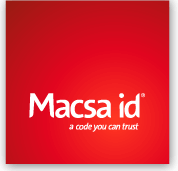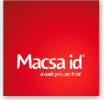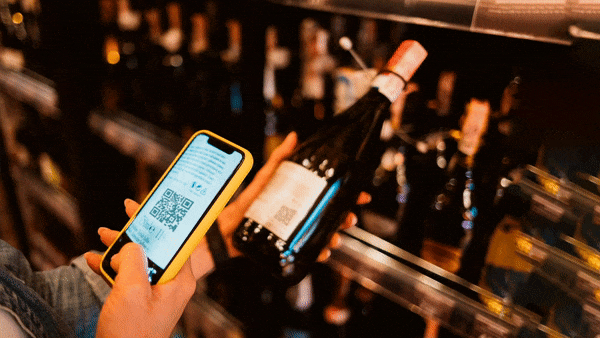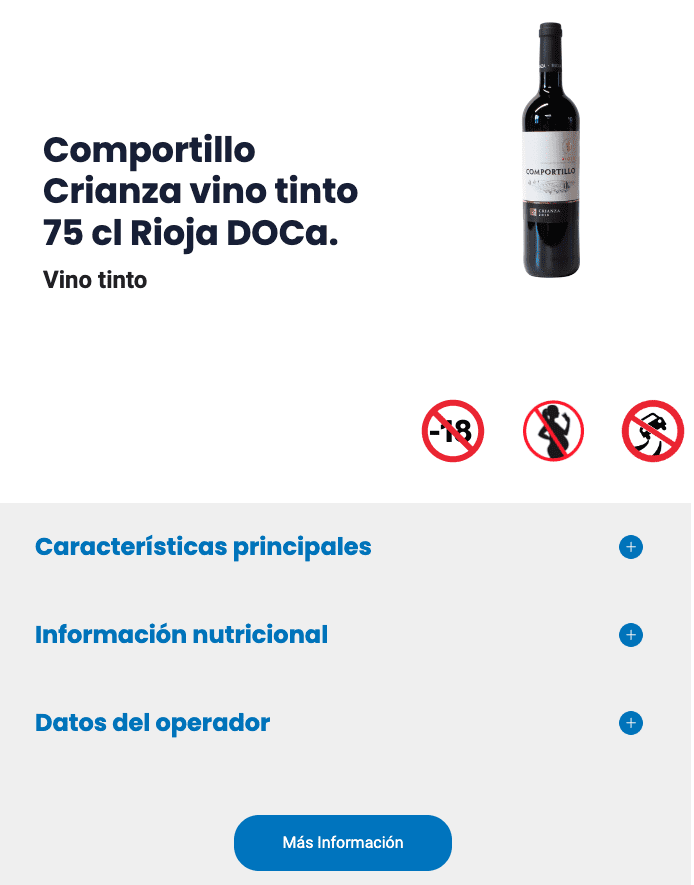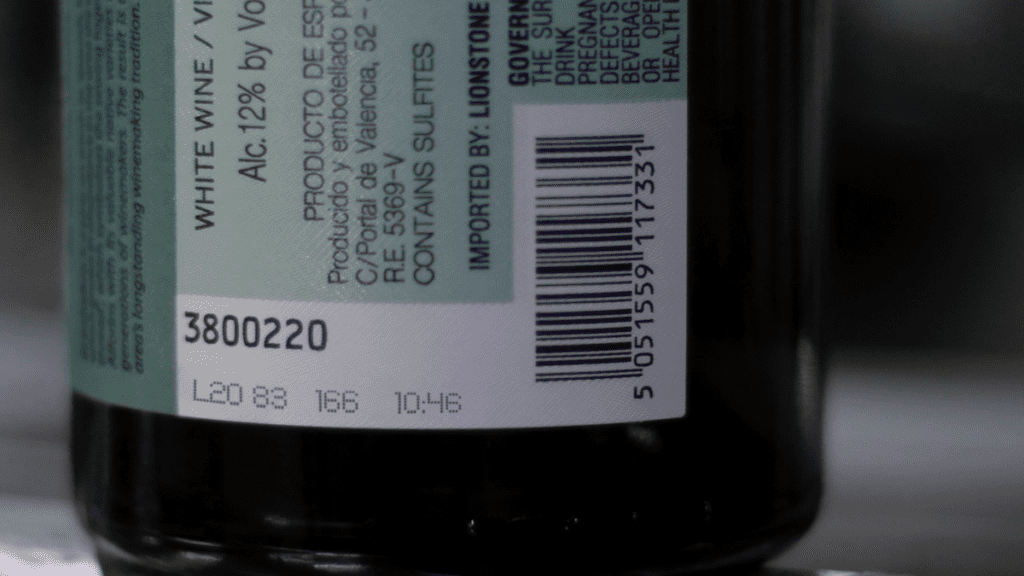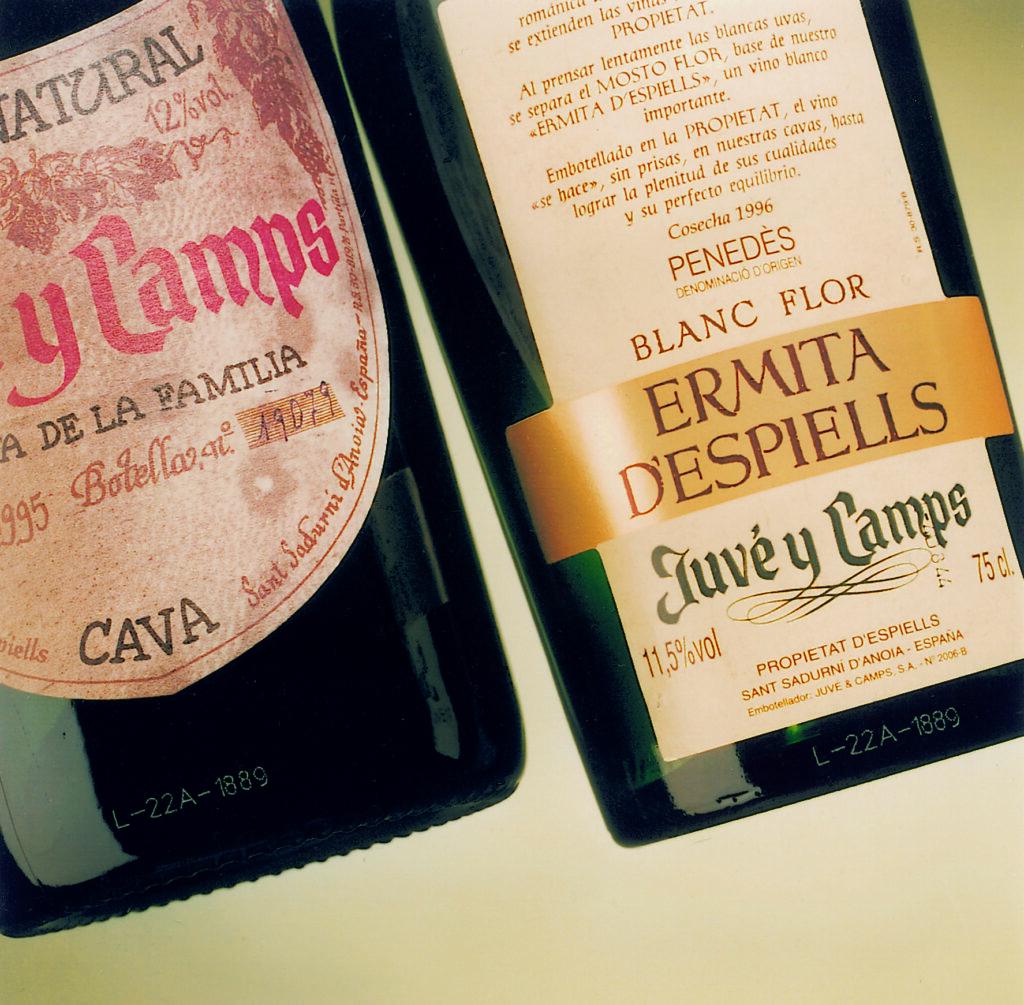At the end of this year, new European Union regulations will mean that wine and cava produced and labelled anywhere in the world and sold in the European Union after 8th December will have to display energy and nutritional values, allergens and a list of ingredients in a prominent place on the label. The use of URL addresses or QR codes are allowed for ingredients and nutritional values.
Contents
- The new regulations
- Electronic labels
- The Macsa id solution
- Why are the regulations changing?
1. The new regulations
From the beginning of next December, it will be compulsory for all wines and aromatised wines with more than 1% alcohol to display the energy values per 100 ml and the substances that may cause allergies and intolerances in a prominent place on the label in an easily legible manner (minimum size 1.2 mm).
In addition, the list of ingredients that make up the product, as well as its nutritional declaration must be stated, allowing the use of a digital label via a QR code for this purpose (for the first time in the food sector). This must be in the same visual field as the other compulsory items that have to be mentioned.
These new regulations, which will also affect online sales websites, is reflected in Regulation (EU) 2021/2117 of the European Parliament and of the Council, which makes it compulsory to provide all the product data defined in the food information regulation (EU) 1169/201.
QR Code on wine bottle
2. Electronic labels
As mentioned above, the nutritional information and ingredients can be provided either physically on the label in a more “traditional” way, or by means of a QR code or a URL address that directs the consumer to a website with this information. But be careful, this website (which will act as an electronic label) cannot include any commercial message or content that incites to purchase, so it must be solely informative, neutral and free from commercial messaging.
Example of a URL accessed via a QR on a label
In addition, the website must not contain any tracking software (the famous cookies) and therefore cannot store data on the customers who visit it. Both points invalidate the use of producer websites as a receptacle for these ‘e-labels’. A further requirement is that the electronic labels must be in every language used in the EU markets where the products are sold.
For all these reasons, the optimal solution is the use of dynamic QR codes (which allow changes to be made to the e-label, even if the code is already printed on the label) and unique QR codes (a different QR code for each product). This solution also allows for automatic translation into the language of the buyer depending on where the user scans.
3. Macsa id’s solution for marking, coding and traceability
Wine and cava labelling takes place in one of the most demanding production environments in existence, as well as in large wineries that do not label by hand. It is necessary to code the product packaging and incorporate barcodes, QR codes and other mandatory information on high speed lines, on a wide range of different materials (paper, cardboard, glass, sleeve, cork, wood, tetra packs…).
Macsa id coding using barcodes
Macsa id is a leader in laser-based solutions for applying these codes cleanly, securely, with high readability and low maintenance costs.
If preferred, wineries can also opt for labelling solutions or inkjet marking from Macsa id. These are very versatile systems that offer the possibility of marking on surfaces such as paper, cardboard, glass, glass, PET or plastic, among others. It allows personalised labelling for wine bottles, and application to glass and PET bottles, among other materials, achieving complete traceability of the wine.
Macsa id laser marking on glass
In addition, the use of Macsa id’s Integra Optima software will allow wineries to centralise the entire coding and marking process at a single point, drastically reducing the number of interventions, and as a result, the possibility of human intervention errors.
If you would like more information on how to adapt your winery to the new regulations, we would like to offer you a free consultation with a marking, coding and traceability technician who is a specialist in the wine market.
4. Why are the regulations changing?
Changing consumer trends increasingly point to a growing demand for information about the producer, production methods, origins and ingredients. This is why the new EU regulation aims to guarantee food safety and to create more trust with the end consumer by providing a transparent list of product ingredients, energy values, information on allergies and intolerances, as well as nutritional content tables.
The idea is that all of this will not only build more trust in the end consumer but also enhance the image of the entire European wine sector.
At Macsa id we will be happy to find the marking, coding and traceability solution that best suits your needs.
